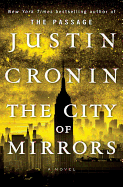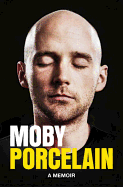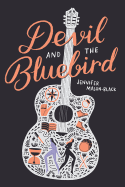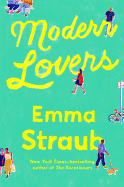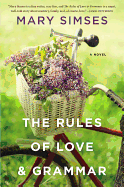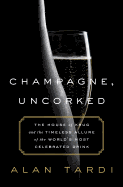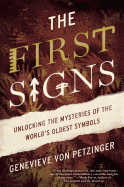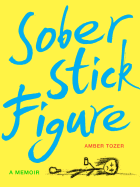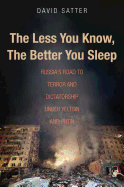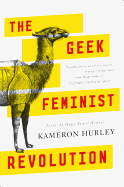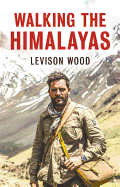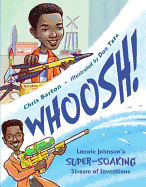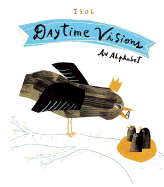Friday, May 27, 2016
.jpg)
Zane is the New York Times bestselling author of 32 titles and, as the publisher of Strebor Books (an imprint of Simon & Schuster), is considered one of the most powerful African-American females in the publishing industry. Zane's platform is the overall empowerment of the female in every aspect of life. She serves on the boards of many nonprofit organizations and has delivered numerous speeches about domestic abuse. Her latest book is Vengeance, a novel of pain, revenge and mental illness. We talked with Zane about writing, racism and her trademark steamy sex scenes.
Zane's core audience is African-American, but, she says, "As the years have passed, my book-signing crowds have become more and more diverse. I have a very large white and Latino audience and a large Asian one as well." She once did a reading at a monthly erotica reading night in New York: "All of the other authors were white and the crowd was receptive to their stories. However, once I read my story 'The Trisexual,' the crowd went nuts. They laughed, smiled, squirmed in their seats and rushed to purchase the book afterwards. The stories that I write are 'evergreen'--passion and sensuality are universal. I wish more people would recognize that. It is disheartening to see white authors come out with their first book and get more attention and a review when I have written dozens of books. The racism is obvious. Maybe one day it will go away.
"I will say that a lot of reviewers who profess to love and read erotica refuse to even accept black erotica titles for consideration. To me that is totally racist and an implication that black women are not sensual and 'normal' like they are. Hot is hot. It is sad that such racial profiling takes place in this day and age."
Move on from shades of gray and read one of Zane's novels; after all, "hot is hot."
Modern Lovers
by Emma Straub
Emma Straub (The Vacationers, Laura Lamont's Life in Pictures) has created a funny, charming world, squarely located in Ditmas Park, an up-and-coming Brooklyn, N.Y., neighborhood. The main characters, former college bandmates, are approaching middle age: real estate agent Elizabeth, her husband, Andrew, and their teen son, Harry, live just down the street from Zoe, her wife, Jane, a chef, and their daughter, Ruby.
It's all quite domestic and serene, until the summer when Zoe and Jane's marriage hits a rocky patch, Andrew gets drawn into some sketchy situations, and the two couples find out that Ruby and Harry are sleeping together.
Matters are further complicated by the fact that a film company has begun production on a biopic about Lydia, the fourth band member, who rocketed to fame after ditching Zoe, Elizabeth and Andrew. Lydia died in her 20s, and her legacy has lingered, while the other three have left music behind for their Brooklyn obscurity. Can the two couples navigate the secrets that the film is bound to uncover? Will they survive the relationship of their children? Or will a marriage and friendships that seemed rock-solid crumble?
Entertaining and evocative, Modern Lovers asks thoughtful questions about what makes a marriage great, the nature of fame and legacy, and when to step back and let your children make their own mistakes. Straub's characters are warm, believable and generally amusing, and beach-reading devotees will want to linger in her sweltering Brooklyn summer. --Jessica Howard, blogger at Quirky Bookworm
Discover: This novel is about middle age and music--and what happens when your children suddenly grow up.
Science Fiction & Fantasy
The City of Mirrors
by Justin Cronin
It's a beautiful thing when worthwhile authors achieve every ambition they tackle; when writers leap every one of the hurdles they set. With the completion of the Passage Trilogy in the vast, intricate and compelling The City of Mirrors, Justin Cronin has done all that.
The City of Mirrors continues the story of a vampiric virus that has ravaged the United States, and probably the rest of civilization, leaving only isolated pockets of survivors, a new society sprouting up delicately, like a daisy under the concrete. The Twelve, a particularly menacing mutation of those infected, have been defeated but a greater threat awaits--Zero, who created them, lurks in a haunted metropolis, ready to battle Amy, "the girl from nowhere," and her intrepid followers. The way the story plays out is both surprising and apt, full of heartbreaking loss and subtle grace notes of joy that will echo in the readers mind.
Cronin has rewarded readers of the Passage Trilogy with an action-packed thriller that stretches the length of the country and beyond, and follows the main characters through decades of shifting alliances and intricate plans as novel moves toward its grand conclusion. The propulsive narrative never flags, and for every intricate action setpiece, Cronin gives astutely wrought moments of well-delivered intimacy. He perfectly balances the addictive rush of a page-turner with the precise prose of a literary magician of the first order. The City of Mirrors and the Passage Trilogy as a whole are an epic entry in the canon of American fantasy literature. --Donald Powell, freelance writer
Discover: The completion of the Passage Trilogy features epic battles, intimate moments and a thought-provoking ending.
Romance
The Rules of Love and Grammar
by Mary Simses
Grace Hammond has already lost her job and her boyfriend when her apartment ceiling caves in. With nothing left for her in Manhattan, she flees for her Connecticut hometown, where she reluctantly agrees to stay with her parents for a few weeks.
Ever since her sister Renny died 17 years earlier, Grace has avoided spending too much time in Dorset, but this time she enjoys her visit. In addition to the small-town charms, her entertaining and educated parents and her always supportive best friend, there's Mitch, the handsome bike store employee who agrees to attempt a refurbishment of Renny's vintage bicycle. And also Peter, Grace's high school sweetheart, who is back in town directing a movie shoot.
Grace's relationships with Mitch and Peter inevitably become complicated, in large part because Grace, a natural critic, can't help pointing out grammar flaws and changes that need to be made wherever she goes. Can Grace learn to forgive the past, step out of Renny's shadow, live less by the rules and have more fun?
Mary Simses (The Irresistible Blueberry Bakeshop & Café), has written a predictable yet charming romance. Grace's quirks make her an empathetic heroine, and readers will chuckle at the predicaments she gets herself into. Anyone who enjoys Kristan Higgins or Kristin Harmel is sure to enjoy Mary Simses, and the descriptions of Dorset's coastal beauties and the New England countryside will make armchair travelers consider a trip to Connecticut. --Jessica Howard, blogger at Quirky Bookworm
Discover: In this charming romance, a grammar snob must decide between two men.
Food & Wine
Champagne, Uncorked: The House of Krug and the Timeless Allure of the World's Most Celebrated Drink
by Alan Tardi
Legend has it that on first tasting the bubbles of champagne, a monk named Dom Pérignon exclaimed, "Come quickly, I am tasting the stars!" Though there are doubts to the validity of this story, there is no doubt that since Pérignon's time, champagne has become a celebrated--and celebratory--drink around the world. In Champagne, Uncorked, Alan Tardi (Romancing the Vine) invites readers into the mysterious and complex world of this sparkling drink through the history of the house of Krug, one of the smallest and most respected of the Grandes Marques (a group of well-established champagne brands).
While the history of the Krug brand forms the center of Champagne, Uncorked, that story is wrapped up in Tardi's story of his time in Champagne, learning how champagne is made--from vines to grapes to picking to pressing to aging to bottling to effervescence. He also expounds on the even larger story of champagne itself: its accidental discovery; its rise to popularity, and how that rise was shaped in France and abroad by royal competitions and wars; the roots of modern-day marketing and brand recognition in the strictly regulated champagne industry; and how the pop of a champagne bottle ultimately came to be one of the greatest symbols of celebration in today's drinking culture.
Champagne, Uncorked packs an enormous amount of detail and complexity (historical, chemical, biological, emotional) into a rather small package--a fitting tribute to the nuance and complexity found in every glass of champagne Krug has produced. --Kerry McHugh, blogger at Entomology of a Bookworm
Discover: Tardi's time in the Champagne region of France shapes this fascinating and detailed history of champagne and the history of the house of Krug.
Nonfiction
The First Signs: Unlocking the Mysteries of the World's Oldest Symbols
by Genevieve von Petzinger
Homo sapiens first appeared in Africa about 200,000 years ago, and there is evidence of symbolic thinking in hominid artifacts from 400,000 years ago. The First Signs is the first book by Genevieve von Petzinger, a groundbreaking researcher of geometric signs in Ice Age rock art, those famous paintings of wild animals, human hands and abstract patterns. Von Petzinger noticed these abstract geometric signs as a student, but her professors told her they had never been seriously studied. So she set out to do it herself.
For two years, she traveled across Europe, struggling through narrow muddy underground tunnels to document signs, sometimes finding as little as a pair of red dots, sometimes finding rooms full of them, apparently made by Ice Age peoples. She discovered that in 367 European rock art sites dating between 10,000 and 40,800 years ago, "there are 32 main sign types, each with its own distinct pattern of use." The earliest sites had such a well-established vocabulary to them, she argues, that they must have originated in Africa, well before human settlement of Europe. She sets her discoveries in the context of everything known about Ice Age peoples and earlier human development, competing interpretations of the mysterious evidence and the overlap of these signs with ones common to modern humans known as "entoptics--a series of geometric shapes generated from within the eye itself." Like any good scientist, von Petzinger is cautious not to speculate too much on the potential for interpreting their meanings. But she clearly plans to continue her work. "I have a feeling that the coming years are going to be particularly exciting ones in my field--prepare to be amazed and astonished!" --Sara Catterall
Discover: New research on early geometric signs in Ice Age cave art will excite anyone interested in the origins of human abstract thought and communication.
Biography & Memoir
Porcelain: A Memoir
by Moby
Whether they love, hate or have never heard of musician Moby's technopop musical stylings, readers will fall hard for his memoir of growing up, chasing elusive dreams and marching to a different drummer.
Although his family tree includes Herman Melville, Moby began life humbly with an impoverished childhood in Connecticut as the only child of a widow. From an early age, he worshipped all music and yearned to live in New York City, where the cultural scene flourished despite epidemics of AIDS and crack use. Moby narrates his struggle, from the late '80s through the '90s, to find and keep an audience, from his first gig DJing at Mars to touring Europe, where he played for thousands of ecstatic ravers, only to return to the U.S. and find the club scene drastically changed and no longer receptive to his music. More than a story about a musician's art, though, Porcelain also brings to life the debauched NYC of the '90s and Moby's vacillations between virtue and vice, particularly in regards to sobriety and the staunch Christian beliefs of his youth.
Perhaps the music industry's gain was the literary world's loss. Moby recounts serious and hilarious stories with equal ease, provoking giggles with memories of DJing an orgy and encounters with city rats and roaches, then switching gears to give a raw and heartrending account of losing a parent. The journey ends abruptly in 1999; let's hope a second volume from this multitalented artist is planned. --Jaclyn Fulwood, blogger at Infinite Reads
Discover: Technopop artist Moby writes the inspirational and candid story of his struggle to navigate life and the music scene in 1990s New York City.
Sober Stick Figure: A Memoir
by Amber Tozer
For nearly three decades, stand-up comedian Amber Tozer (Cartoon Network's MAD, Adult Swim's Moral Orel) maintained a troubled relationship with alcohol, one that began innocently enough at seven, when an uncle proffered that first drink. Sober Stick Figure tells of Tozer's descent into alcoholism and her slow, painful journey to sobriety.
Tozer's fate seemed predetermined. She was descended from a long line of alcoholics and her parents were owners of the local watering hole. An overachiever athletically and academically, she indulged in recreational binge drinking to silence negative voices in her head. When she was 13, Jim Beam was "a voice I felt like I had been waiting for all my life," a seductive drug she would crave like crack cocaine during school holidays, despite her baby sister's close brush with death at the hands of a drunk driver. In her 20s, alcohol became a self-medicating salve in times of social and emotional distress. A move to New York City after college brought easy access to bars, alcohol as barter for an aspiring stand-up comedian. "Partying in a big city and experimenting with new jobs and challenges and being overexposed to everything" fueled her mounting self-destructiveness, until she finally hit rock bottom at the height of professional success in Los Angeles.
Tozer writes with unguarded honesty about addiction and what it means to be an alcoholic. The moments of hilarity are rare, such as Tozer's obsession with self-help guru Tony Robbins, yet for all the pain and self-destruction Tozer has endured, Sober Stick Figure ends on a promising, if tentative, silver lining that the best is yet to come. --Nancy Powell, freelance writer and technical consultant
Discover: Stand-up comedian Amber Tozer has written a candid and inspiring account of her experiences with alcoholism and sobriety.
History
The Less You Know, the Better You Sleep: Russia's Road to Terror and Dictatorship Under Yeltsin and Putin
by David Satter
In September 1999, four apartment buildings in three Russian cities exploded, killing 300 people and injuring another thousand. The attacks were blamed on Islamist terrorists and used to justify the Second Chechen War. The war smoothed the transition of power from Boris Yeltsin to former KGB officer Vladimir Putin, whose rise reassured the oligarchs who had looted the wealth of the Soviet Union that their riches would remain untouched.
In 2002, dozens of armed Chechens held 850 theater-goers hostage in Moscow. Russian special forces killed all the militants and 130 hostages during a raid by using a secret formulation of knockout gas. The siege renewed domestic support for the war in Chechnya at a time when Putin was under intense pressure to negotiate peace. In 2004, a similar siege at a school in Beslan ended with the deaths of 330 hostages, including 186 children, after Russian forces stormed the school with heavy weapons. In the aftermath of that tragedy, Putin abolished the popular election of governors in order to "strengthen national unity."
In The Less You Know, the Better You Sleep, journalist David Satter (Darkness at Dawn), who has written about Russia for nearly 40 years, makes a compelling case that these terror attacks, along with a string of assassinations, are the responsibility of the FSB (once known as the KGB) and a wider criminal enterprise now in control of the Russian state, all of whom are answerable to one man: Vladimir Putin. As the first American journalist expelled from Russia since the Cold War, Satter's evidence is chilling, often damning. --Tobias Mutter, freelance reviewer
Discover: The first American journalist expelled from Russia since the fall of the Soviet Union claims Putin was involved in deadly attacks on Russian citizens.
Social Science
The Geek Feminist Revolution
by Kameron Hurley
The online and print ecologies of science fiction and fantasy fandom are evolving, becoming more progressive, more accepting of diversity and less problematic in their narratives (e.g., not using rape as a shorthand for character development). This is the impression that Kameron Hurley (God's War) creates in The Geek Feminist Revolution, a collection of blog posts, with a few essays written specially for this edition. But social progress is not without reactionaries: men often threaten women and minority authors and gamers with rape and death for participating in these areas. Several essays question the concept of privilege. Hurley writes, "I am tired of being asked, again and again, what women can do to save these men.... I want a new conversation around what men can do to be better." Creators and consumers, she believes, all have social and political responsibilities when approaching art.
Hurley rounds out the collection with pieces on what it takes to be a writer--persistence, specifically--and astute media criticism of movies such as Mad Max: Fury Road. Her writing is as deft and provoking as Roxane Gay's in Bad Feminist, and remains true to the theme of the struggle that individuals with fewer social advantages experience in cultural arenas.
There are some structural weaknesses: because these were blog posts, each is very brief, disjointing the whole; and more than a handful refer rather obliquely to issues that those outside the SFF community might find somewhat opaque. Better introductions or annotations would have ameliorated this flaw. Yet, even for outsiders, there is much here to enjoy and consider. --Evan M. Anderson, collection development librarian, Kirkendall Public Library, Ankeny, Iowa.
Discover: This penetrating collection of essays analyzes responsibility and equality in science fiction/fantasy media as well as in society.
Travel Literature
Walking the Himalayas
by Levison Wood
After walking 4,000 miles down the Nile, Levison Wood (Walking the Nile) was enjoying life in London and not thinking about another lengthy trek. But the wilderness called: when the chance came to walk 1,700 miles through the Himalayas, Wood took off on another six-month adventure. Beginning in Afghanistan and ending in Bhutan, Wood and his guides faced scorching heat, monsoon rains, treacherous mountain roads, landslides, tigers, crocodiles, armed military men and political disputes that made crossing borders as dangerous as the natural world. Despite the hazards, Wood bonded with his guides and the various peoples of Kashmir, India and Nepal as they shared roasted meats and milky tea in huts, yurts and hovels on the mountain slopes and valleys of the Himalayas.
Wood skillfully intersperses cultural, political, religious and historical information about the region he trekked through with beautiful, detailed descriptions of the people and countryside. He writes, "Rice paddies gave the valley floor a bright and verdant shimmer and spiraling plumes of smoke curled out from wood-fires in the villages below.... Beyond this rose something wild and untamed. Something so sublime in its proportions, and gargantuan in its raw, unwieldy beauty as to give the impression that it was floating in mid-air, somehow unattached from the green and brown hills and valleys below." Despite private audiences with the Dalai Lama, a swami, and a cannibal, all of whom gave him important advice, the most significant revelations come as Wood stands at the end of his quest. --Lee E. Cart, freelance writer and book reviewer
Discover: Travel writer and adventurer Levison Wood recounts his walk 1,700 miles through the Himalayas, facing hardships and gaining friends in the process.
Children's & Young Adult
Devil and the Bluebird
by Jennifer Mason-Black
Infused with bluegrass and blues, Jennifer Mason-Black's first novel takes readers on a melodious road trip through a dark but magical American landscape.
One night, 17-year-old Blue Riley waits at the crossroads to make a deal with the Devil: her soul in exchange for finding her big sister, Cass, who left after their mother, a talented alt-country musician, died of cancer two years ago. However, the woman who appears that fateful night in "a red dress that dripped off her hips" wants a game, not a trade--she grants Blue six months to find Cass, but takes her voice in exchange. If Blue fails, she forfeits her soul and Cass's. Blue hits the road in rural Maine with no one and nothing on her side but the guitar she loves to play, her mother's. Now mute, she hitches her way west cross country, encountering kind strangers, dangerous criminals and the occasional ghost as her path twists in and out of reality. In true devilish fashion, "the woman in red" persists in changing the rules, keeping Blue constantly on the move.
In Devil and the Bluebird, the universal question of a soul's worth feels uniquely American, drawing on the folk legend of the devil and Robert Johnson. Mason-Black's story lives on society's fringes, tangling around small-time musicians, lost souls and street kids, highlighting the beauty and brutality of wandering the world alone. Older teens will especially appreciate this allegory for finding one's voice, finding one's own kind of family, and the danger of playing "a tune that's not your own." --Jaclyn Fulwood, lead librarian at Del City Public Library, Okla.
Discover: A teenager on a cross-country odyssey must find her sister before the devil takes her soul.
Whoosh! Lonnie Johnson's Super-Soaking Stream of Inventions
by Chris Barton, illus. by Don Tate
This appealing, inspiring picture-book biography by Chris Barton (Shark vs. Train; The Amazing Age of John Roy Lynch), illustrated by Don Tate (Poet: The Remarkable Story of George Moses Horton), explores the life of Lonnie Johnson, the African American rocket scientist who invented the Super Soaker water gun... by accident.
Lonnie grew up in the 1950s with five siblings "squeezed into their parents' small house in Mobile, Alabama." Forever tinkering with spare parts and junkyard scraps, he made rockets from scratch, and even built his own robot named Linex with jukebox switches and his little sister's walkie-talkie: "Lonnie used a tape recorder to program Linex, and as a bonus the reels looked like eyes." (Linex won first place for Lonnie's team at a 1968 University of Alabama science fair.) Lonnie, "a self-confident, insightful, creative thinker," went to college at Tuskegee Institute, then, as an engineer, worked for NASA's Jet Propulsion Laboratory. At NASA, he created a lightweight backup system for the Galileo space probe that photographed Jupiter and its moons.
At home one day, Lonnie was working on a new refrigerator and air-conditioning cooling system, using the faucet in his bathroom sink with a hose, pump and nozzle, when "WHOOSH!"--water sprayed out with such force he decided his contraption "would make a great water gun." He approached toy company after toy company with his invention until finally, he struck gold. Barton's clean, lively prose and Tate's boldly composed, often comical illustrations--including a dramatic gatefold capturing the Super Soaker's mighty trajectory--make Lonnie Johnson's story of passion and persistence whoosh to life. --Karin Snelson, children's & YA editor, Shelf Awareness
Discover: Chris Barton and Don Tate's entertaining picture-book biography tells the story of Lonnie Johnson, inventor of the Super Soaker.
Daytime Visions: An Alphabet
by Isol, illus. by Isol, transl. by Isol and Elisa Amado
Daytime Visions is not like any other alphabet book.
The endpapers show a woman doing the backstroke, eyes closed, swimming under the sun, afloat in a blue sea of letters. The title-page spread features that same lettered sea, but here an undersea squid squirts just enough ink to make the perfect black backdrop for the book's title. The book is gorgeously, meticulously designed from start to finish, with a charmingly rough simplicity achieved through crayon-like hand-lettering, blocky collages, intriguing textures and inky, kinetic brushstrokes. Every page or spread looks like it belongs in a modern art museum.
From A to Z (shown in upper and lowercase, and in cursive), each letter is represented by a scene, a mini-story, a "daytime vision," with a word or an entire phrase. The letter A spread shows a little bird flying away from a barking dog. "That's not an answer," it says. Does that mean escape isn't an answer? The beauty of it is that readers will bring to each scenario what they will. The letter C is "Come on!" and shows a girl impatiently watching a potted plant grow. The letter K is "The kiwi again!" and, amusingly, shows a large kiwi bird standing atop a child in bed who is clearly trying to sleep. Daytime Visions is in turns funny, touching, thought-provoking and deliciously odd.
Argentina-born Isol (The Menino; Nocturne; It's Useful to Have a Duck) specializes in "the narration through the dialogue between image and word," says her brief biography. B for brava. --Karin Snelson, children's & YA editor, Shelf Awareness
Discover: Argentina-born Isol's exquisite and unusual alphabet book will be as irresistible to adults as it is to children.
| Advertisement Meet belle bear! |


